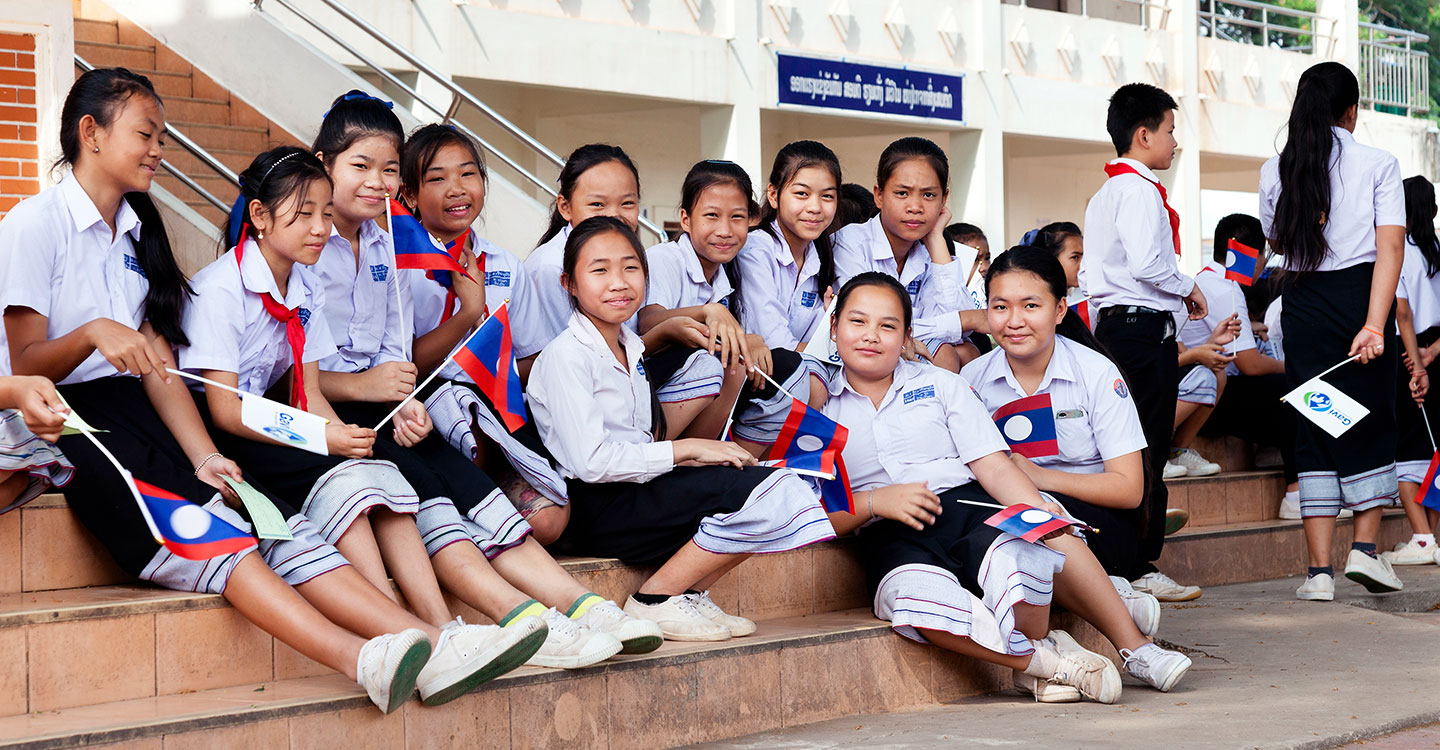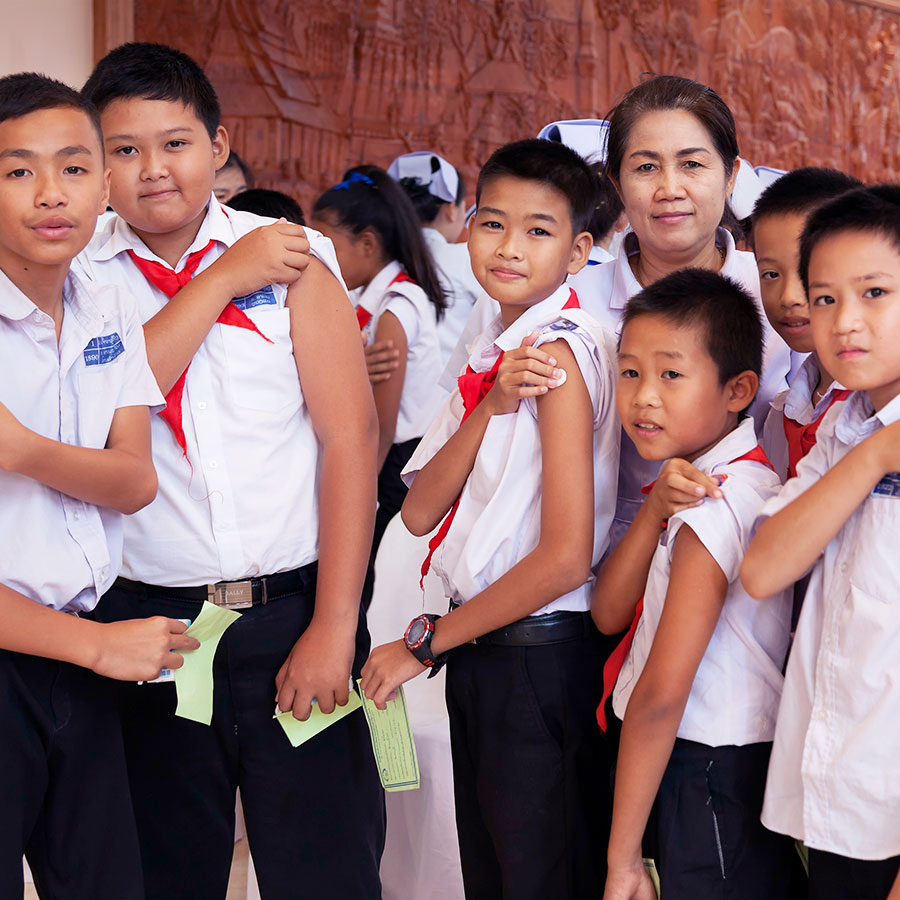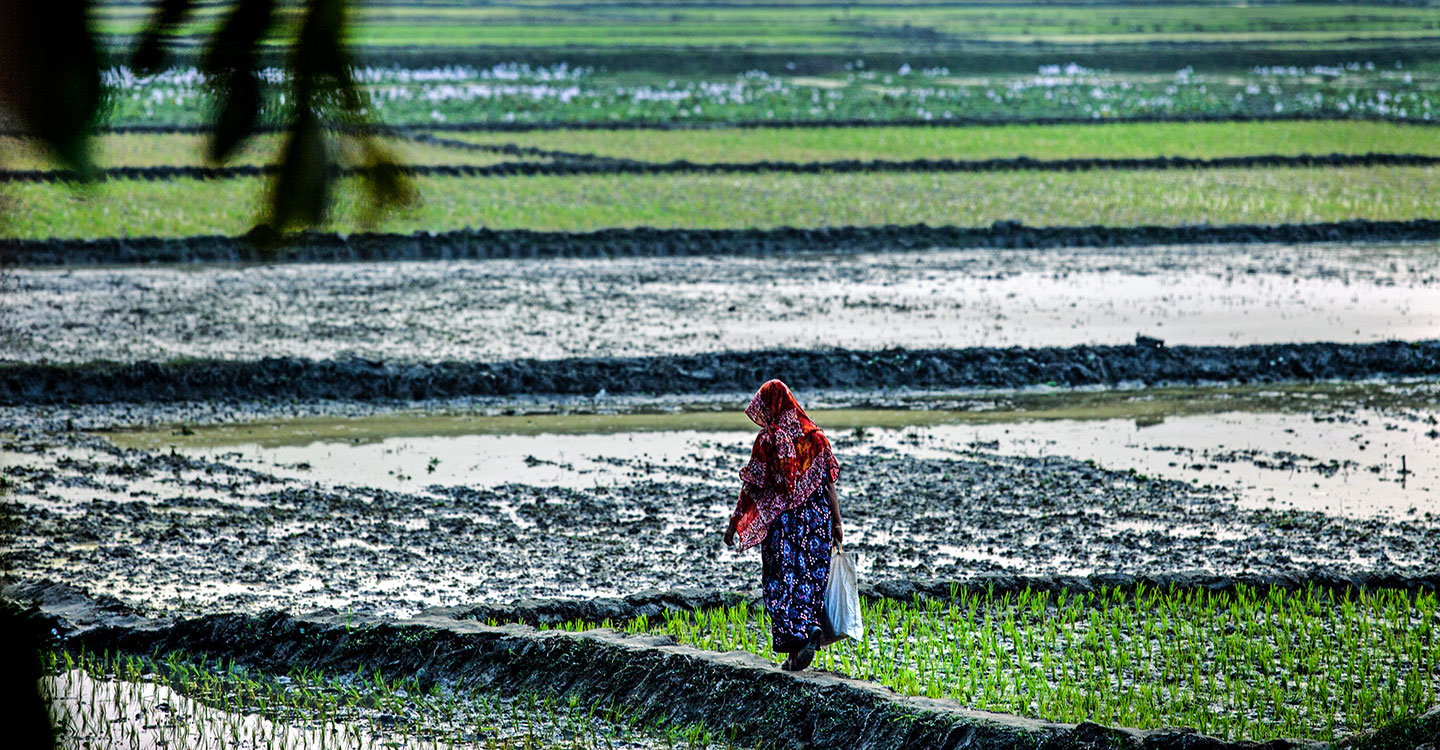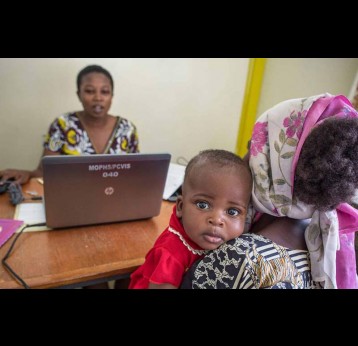Gavi's impact
Lao PDR became the first country to conduct a JE campaign with Gavi support in 2015
More than 18 million children immunised by the end of 2018
In April 2015, the Lao People’s Democratic Republic (Lao PDR) became the first country to run a Gavi-supported Japanese encephalitis (JE) campaign. This was just 18 months after WHO added a JE vaccine developed by Chengdu Institute of Biological Products to the list of prequalified vaccines that United Nations agencies can procure.
Following the success of the catch-up campaign, Lao PDR added JE vaccine to its routine immunisation schedule.
In June 2016, the Gavi Board agreed to co-finance countries’ routine Japanese encephalitis vaccine programmes in addition to funding catch-up campaigns. As a result, Gavi is increasing its support for this life-saving vaccine and helping the region take the necessary steps to reduce the JE disease burden in the long term.
OVER 18 MILLION CHILDREN REACHED
By the end of 2018, more than 1.6 million children had been immunised through Gavi-supported routine immunisation programmes and more than 16 million children through catch-up campaigns, totalling over 18 million children reached.
In 2018, Indonesia introduced the JE vaccine on the island of Bali through a campaign and into the routine immunisation system. Since support for the vaccine began, five Gavi-supported countries (Lao PDR, Nepal, Myanmar, Cambodia, and Indonesia) affected by JE have introduced the vaccine to prevent the effects of this potentially deadly disease.
The Alliance has drawn on the strengths of its individual partners to accelerate access to JE vaccine, which has a long manufacturing lead-time. WHO, UNICEF’s Supply Division, PATH and the Bill & Melinda Gates Foundation all play a critical role in ensuring sufficient supply of the vaccine to countries in need as well as the technical assistance needed to make decisions for introduction and implementation.
The issue
Spread by mosquitos, Japanese encephalitis is the main cause of viral encephalitis in Asia.
Case-fatality rates can be as high as 30%, with up to 50% of survivors suffering permanent disability.
Often called “brain fever”, JE begins with flu symptoms, progresses to a brain infection and claims the lives of up to 30% of those infected.

Spread by mosquitos, Japanese encephalitis is the main cause of viral encephalitis in Asia.
Case-fatality rates can be as high as 30%, with up to 50% of survivors suffering permanent disability.
Often called “brain fever”, JE begins with flu symptoms, progresses to a brain infection and claims the lives of up to 30% of those infected.
Disease burden
Outside of Asia, Japanese encephalitis (JE) is relatively unknown, but more than three billion people live in areas at risk of the viral disease. JE is especially prominent in the poor rural communities of eight Gavi-supported countries in South-East Asia and the Western Pacific.
According to WHO, mortality is estimated at between 13,600 and 20,400 deaths each year, but awareness of the disease is low, and the figures may underestimate the real impact. In 2005, a devastating outbreak of JE killed nearly 2,000 people in India and Nepal, mostly children.
JE’s lifelong toll on its survivors is even less known. Up to 50% of cases result in permanent neurological weaknesses, with the highest rate reported in children.
Mosquito-borne
The virus is hosted by wading birds like herons and egrets, which flock to rice paddy fields, and by the pigs commonly raised in rural areas. It is then transmitted to humans by mosquitoes.
JE cannot be transmitted from one person to another.
Vaccine-preventable
There is no specific treatment for JE. Prevention of the disease through effective and relatively inexpensive vaccines is the best control strategy.
Gavi’s response
Gavi supports JE catch-up campaigns and co-finances the vaccine for routine immunisation.
In 2014, Gavi invited countries to apply for support to introduce the Japanese encephalitis (JE) vaccine. The first Gavi-funded JE vaccine campaign started in Lao People’s Democratic Republic in 2015, with Nepal and Cambodia following suit in 2016. Myanmar conducted a nationwide campaign targeting children 9 months–15 years in 2017 with introduction into routine nationwide in 2018, and Bali in Indonesia conducted the islandwide campaign in 2018 with introduction into routine in the same year.

Gavi supports JE catch-up campaigns and co-finances the vaccine for routine immunisation.
In 2014, Gavi invited countries to apply for support to introduce the Japanese encephalitis (JE) vaccine. The first Gavi-funded JE vaccine campaign started in Lao People’s Democratic Republic in 2015, with Nepal and Cambodia following suit in 2016. Myanmar conducted a nationwide campaign targeting children 9 months–15 years in 2017 with introduction into routine nationwide in 2018, and Bali in Indonesia conducted the islandwide campaign in 2018 with introduction into routine in the same year.
In line with WHO recommendations, Gavi provides support for JE catch-up campaigns and co-finances the vaccine for use in routine immunisation programmes. The catch-up campaigns are intended to pave the way for countries to introduce the vaccine into the routine system.
The campaigns target children aged 9 months to 14 years and ensure sustainability by embedding JE vaccine into national immunisation programmes. Where the vaccine is introduced into the routine system, children are vaccinated at 9 months.
Prequalification
In 2011, the Gavi Board recommended opening a window for country applications for Gavi support, pending the prequalification of an appropriate JE vaccine.
In October 2013, WHO added a JE vaccine, known as SA 14-14-2 and developed by China’s Chengdu Institute of Biological Products, to its list of prequalified vaccines – opening the door for United Nations agencies to procure the vaccine. It is the first Chinese-produced vaccine to be prequalified by WHO, and the first prequalified JE vaccine for paediatric use.
Recognising JE’s burden of disease, PATH collaborated with the Chengdu Institute, WHO and ministries of health on clinical trials to demonstrate that the vaccine, made from an active but weakened virus, is both safe and effective. It only requires one dose.
PATH also negotiated with the manufacturer to ensure a special affordable public-sector price for low-income and some middle-income countries at risk of JE transmission, such as the Philippines.
WHO recommends immunisation in all regions where the disease is a recognised public health problem. Additional vaccines appropriate for paediatric use are expected to be prequalified in the near future, adding to the choices available for countries.
From other sites
How to apply for vaccine support
Eligible countries can access detailed guidelines to manage the support they receive from Gavi.


